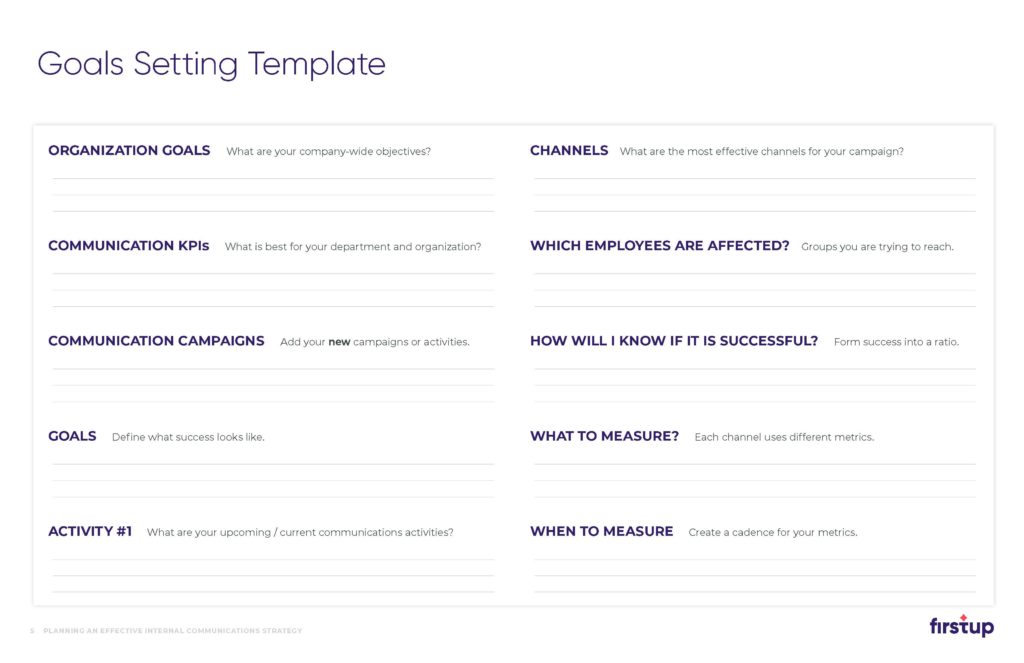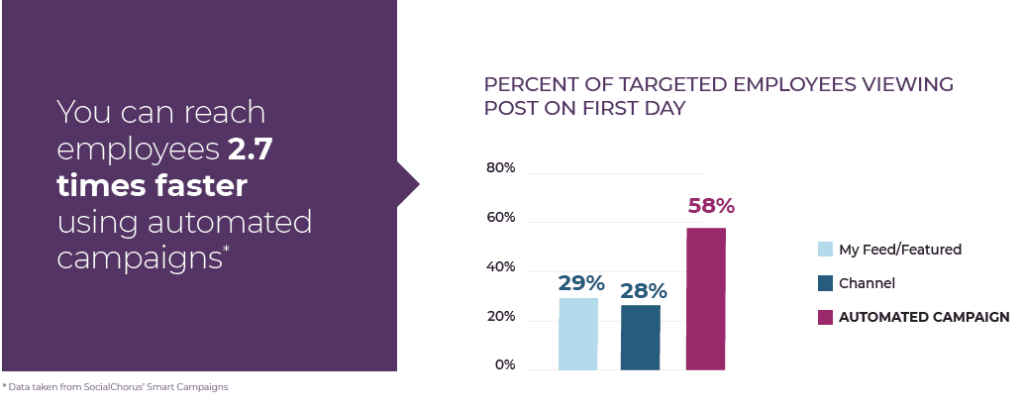Think about your latest initiative—the yearly open enrollment, compliance for your frontline workers on the East Coast, or announcing the town hall meeting with the CEO. How did you get the communications out?
Imagine if you could automate these messages, target the right employees on their preferred channels, and then measure how they performed in realtime. You would ensure specific employees get the information when they need it and once, the desired action is taken, the campaign is complete.
Until now, communicators have never had an automation tool that gives them the ability to set up a campaign like this. Instead, they have the painstaking task of one-off communications that can result in multiple manual (and often “spammy”) email blasts.
This process is ineffective for communicators and annoying for employees—but what if you could follow up with only the workers who hadn’t completed the survey, and do it automatically?
What are automated campaigns?
Automated campaigns are one-time or recurring messages that can be sent to all employees or targeted to specific groups. Here’s how they work.
- Messages are sent as push notifications, in-app notifications,
- or emails, depending on the employee’s preference.
- Once sent, depending on the campaign type you choose,
- the campaign will continue to follow up with employees
- who have not taken the desired action over a selected period
- of time.
- Administrators can track results of each campaign in real-time from the reporting dashboard.
Three tips for a successful automated campaign
1. Plan for success: Define your top-level goals
It’s important to define goals for your automated campaigns. Proper planning will make your campaigns much more impactful.
Establish objectives for your campaigns
Start with your current campaigns, programs, or initiatives. Ask these questions and fill in your goals worksheet:
- Which employees do I need to reach?
- What do I hope to achieve?
- What type of campaign best fits my objectives?
For example, let’s say you have a new company initiative to reach manufacturing workers at all plants globally. You have a communications campaign to make sure they are compliant with new safety procedures, especially those employees that have been the hardest to reach.
How will you define success?
Think about your past initiatives; in the context of this example, you could consider questions like:
- What kind of communications initiatives did you do last year?
- Did everyone participate, or were there groups with low participation?
- If so, were there any reasons why their participation was so low?
- What would you do differently this year?
- How can you increase participation to reach your goals?
For the safety campaign example, the goal could be to increase the number of employees reached from the frontline employee segment. Then establish a ratio or percentage to define the goal. For example, a 50% compliance rate (from all the employees in this group) could be your achievement. Then add this success definition to your worksheet. We’ll show you measurement examples and go deeper into how to calculate goals at the end of this ebook.

2. Define Your audience: Who do you want to reach and engage with this message?
Define your audience by location, role, and/or job title
The purpose of your campaign will determine who you need to reach; and automated campaigns enable you to target your campaigns to multiple employee segments, including by location, role, and title.
For example, if you’re running a campaign for open enrollment for a particular program, you’ll want to reach all benefits-eligible workers, but if open enrollment is only happening in the U.S., you won’t want to send those messages to employees at the company’s Canada office.
Or, if you have a communication that is exclusively for management, you’ll want to make sure it doesn’t go to rank-and-file team members. Thinking through this before you start to write your message can greatly improve its effectiveness.
3. Measuring communications success: Choosing KPIs and using metrics
By measuring and understanding the leading metrics for your campaigns, you’ll increase employee engagement over time, make more informed decisions going forward, and align leadership with employees to drive business goals.
Review available metrics and determine how to use them
Metrics measure the success of a specific campaign; while KPIs usually connect to a larger business strategy, metrics are more tactical. Metrics support KPIs, and KPIs support overall business goals, but both must be quantifiable.
Get started with automated campaigns on your next internal communications initiative.
Download PDF









